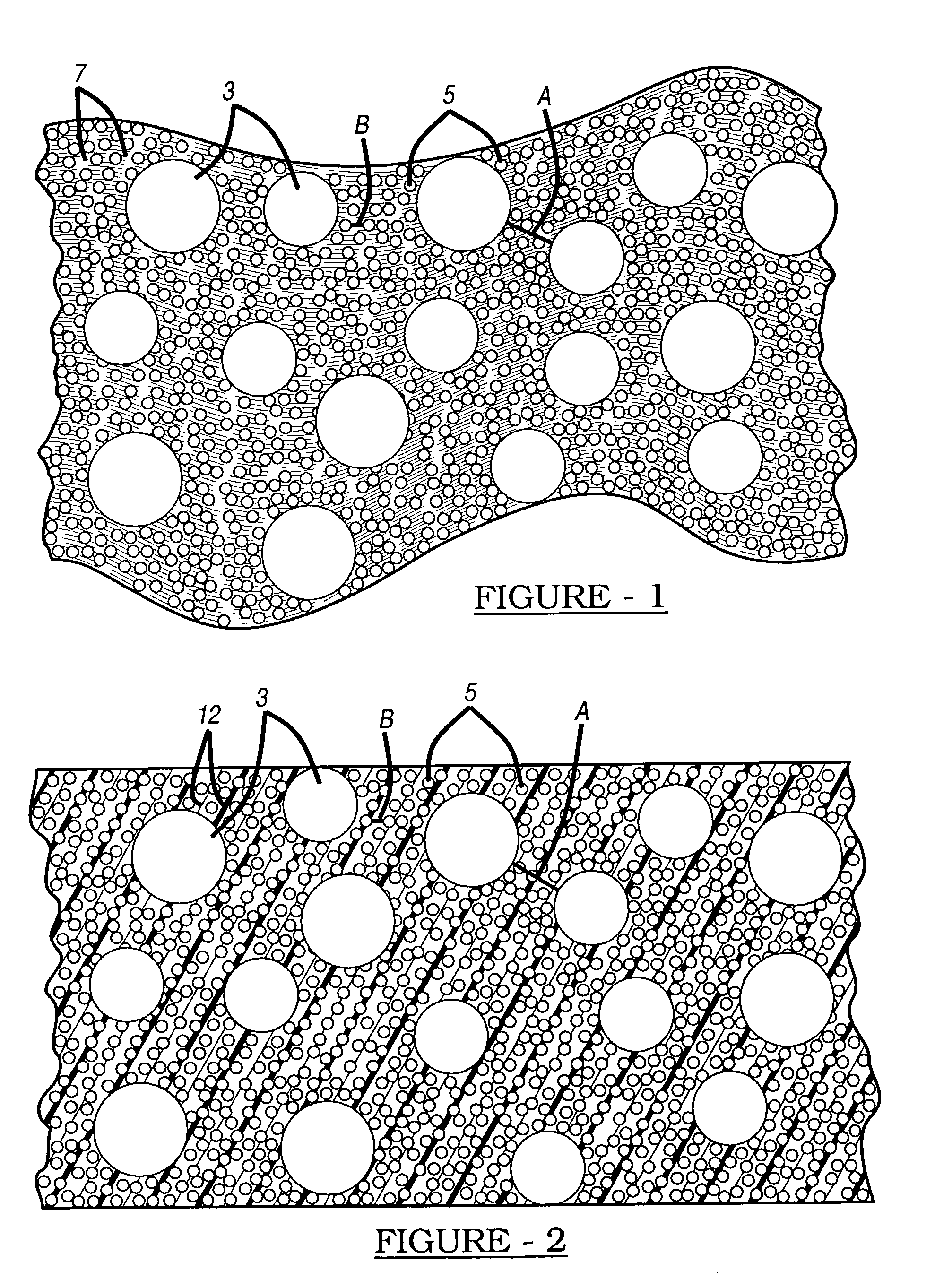Reduced exothermic bone replacement cement
a bone replacement and exothermic technology, applied in the field of bone cement, can solve the problems of tissue necrosis, increased bone cement temperature, damage to the bone structure, etc., and achieve the effect of reducing the amount of liquid component and reducing the amount of polymerization
- Summary
- Abstract
- Description
- Claims
- Application Information
AI Technical Summary
Benefits of technology
Problems solved by technology
Method used
Image
Examples
example 1
Bone Cement Precursor Formulation
[0031] An exemplary bone cement formulation includes a dry component and a liquid component. The dry component includes 60% PMMA styrene copolymer beads (fine constituent), 10% barium sulfate (fine constituent), and 30% PMMA polymer beads (large constituent). The PMMA-styrene copolymer has an average particle size of about 65 micrometers. The PMMA polymer has an average particle size of about 750 micrometers. The liquid component of the formulation includes about 98% MMA monomer, about 2% dimethyl-p-toluidine, and about 60 PPM hydroquinone. The liquid component has a density of 0.94 grams per milliliter.
example 2
Bone Cement Formation
[0032] Approximately 40 grams of the dry component from Example 1 is mixed with about 14.5 milliliters of the liquid component from Example 1. The mixture is then mixed by hand and allowed to polymerize. The maximum exothermic temperature recorded of the mixture per the ASTM 451 method is about 52.degree. C. (about 120.degree. F.). The mixture reaches its dough or workability stage at about three minutes after the start of mixing. The mixture sets to its final polymerized state at about 9 minutes at about 23.degree. C. ambient temperature.
[0033] Therefore the bone cement 10, using the components disclosed herein, forms a substantially non-porous bone cement 10. That being the bone cement 10 formed generally includes a porosity less than about 5% and may be formed in a package or device to have a porosity of less than about 1%. The general lack of porosity is provided by the fact that there is enough of the fine constituent 5 and liquid component 7 to substantial...
PUM
| Property | Measurement | Unit |
|---|---|---|
| Fraction | aaaaa | aaaaa |
| Percent by mass | aaaaa | aaaaa |
| Percent by mass | aaaaa | aaaaa |
Abstract
Description
Claims
Application Information
 Login to View More
Login to View More - R&D
- Intellectual Property
- Life Sciences
- Materials
- Tech Scout
- Unparalleled Data Quality
- Higher Quality Content
- 60% Fewer Hallucinations
Browse by: Latest US Patents, China's latest patents, Technical Efficacy Thesaurus, Application Domain, Technology Topic, Popular Technical Reports.
© 2025 PatSnap. All rights reserved.Legal|Privacy policy|Modern Slavery Act Transparency Statement|Sitemap|About US| Contact US: help@patsnap.com

